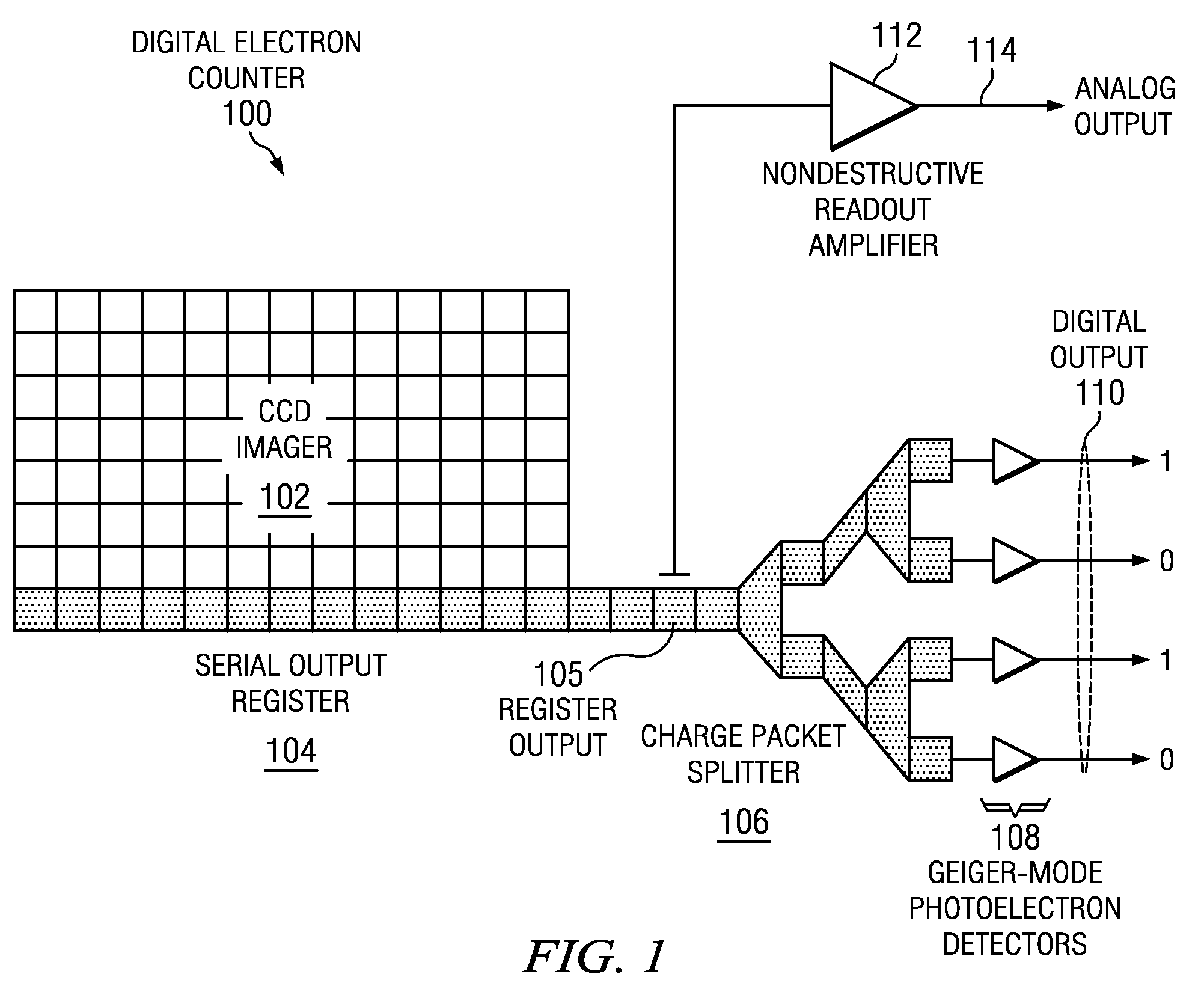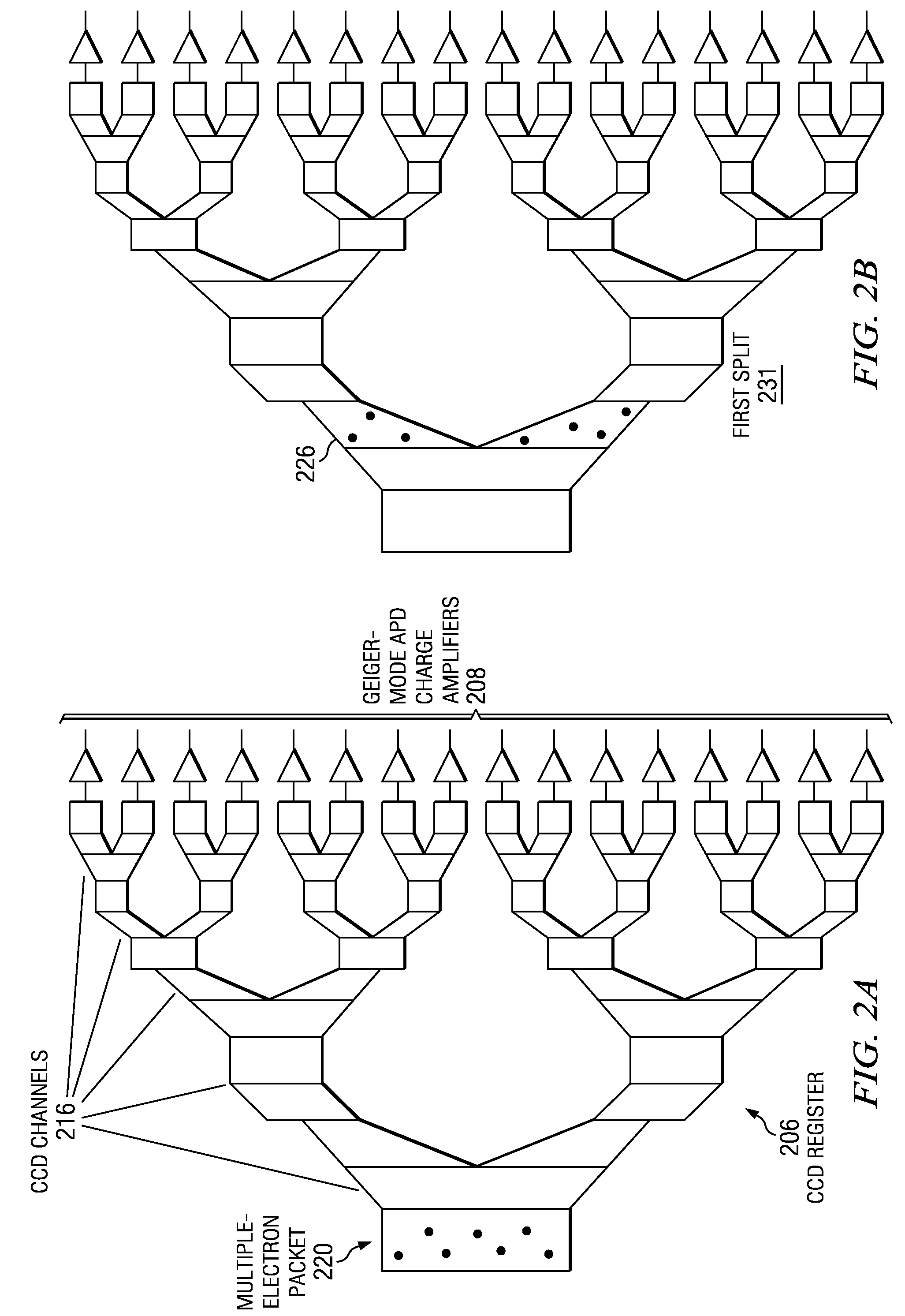Single-electron detection method and apparatus for solid-state intensity image sensors
a single-electron detection and intensity image technology, applied in the field of single-electron detection methods and apparatuses for solid-state intensity image sensors, can solve problems such as limited dynamic range, and achieve the effects of high dynamic range and sensitivity, extended dynamic range, and high sensitivity
- Summary
- Abstract
- Description
- Claims
- Application Information
AI Technical Summary
Benefits of technology
Problems solved by technology
Method used
Image
Examples
Embodiment Construction
[0015]FIG. 1 is a block diagram of an electron counter 100 coupled to a CCD imager 102. The CCD imager 102 converts incident photons into photoelectrons whose spatial distribution follows the irradiance of the incident light. Each sensing element in the CCD imager 102 accumulates photoelectrons to form packets of charge that are transferred serially along the columns of the array to a serial output register 104 in the electron counter 100.
[0016]The serial output register 104, also known as a CCD register 104, transfers charge to a register output 105. A nondestructive readout amplifier 112 coupled to the register output 105 senses the transferred charge packet and generates an analog voltage 114 whose amplitude corresponds to the size of the charge packet. Generally, large charge packets produce voltages 114 whose amplitudes are well above the analog noise floor. If the charge packet is too small, however, then the amplitude of the analog voltage 114 may not be high enough above the...
PUM
 Login to View More
Login to View More Abstract
Description
Claims
Application Information
 Login to View More
Login to View More - R&D
- Intellectual Property
- Life Sciences
- Materials
- Tech Scout
- Unparalleled Data Quality
- Higher Quality Content
- 60% Fewer Hallucinations
Browse by: Latest US Patents, China's latest patents, Technical Efficacy Thesaurus, Application Domain, Technology Topic, Popular Technical Reports.
© 2025 PatSnap. All rights reserved.Legal|Privacy policy|Modern Slavery Act Transparency Statement|Sitemap|About US| Contact US: help@patsnap.com



